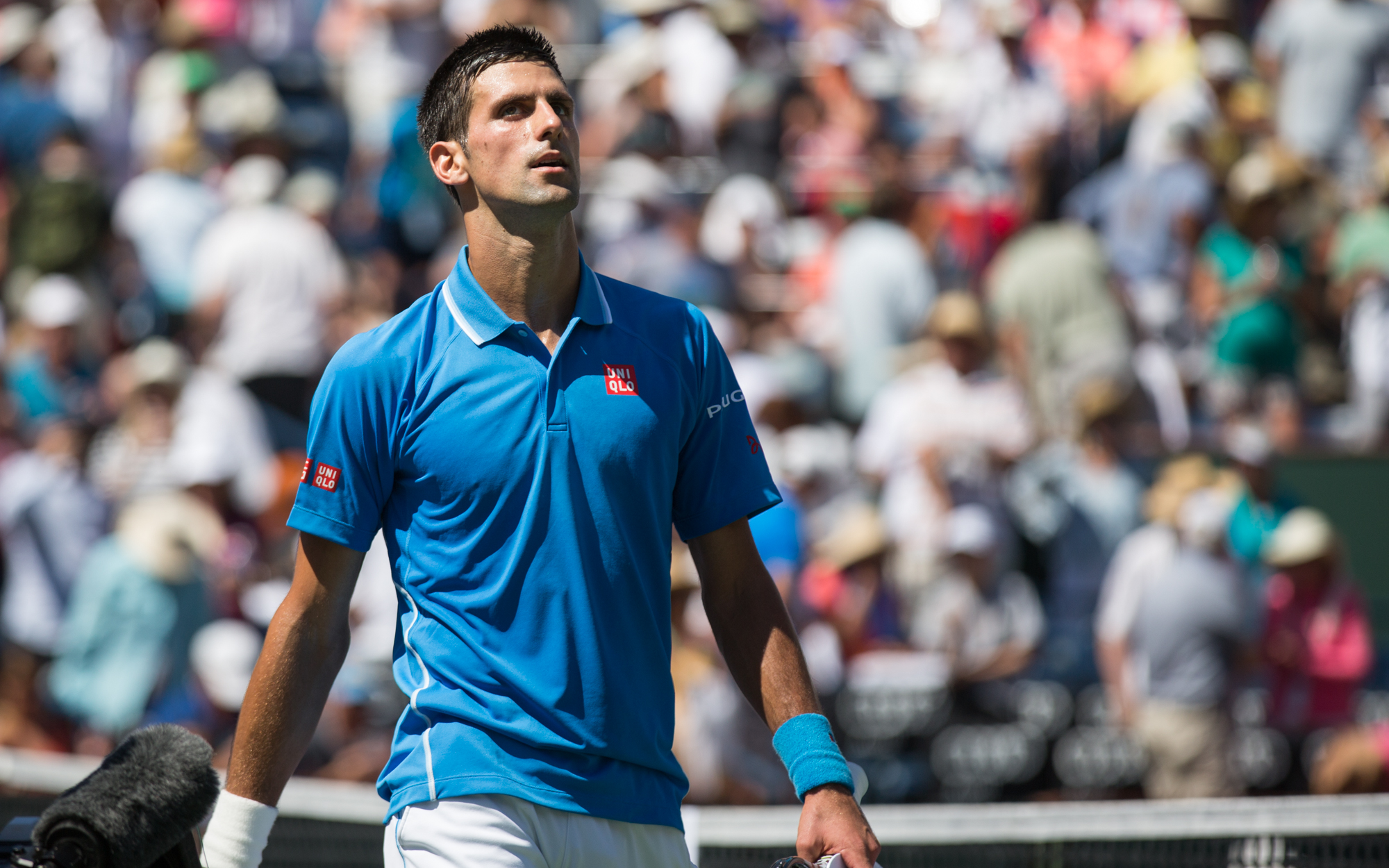 Welcome to Tennis Elbow, the column that looks back on the week that was in the world of tennis. This week, Charles Blouin-Gascon recaps the 2016 Australian Open men’s final.
Welcome to Tennis Elbow, the column that looks back on the week that was in the world of tennis. This week, Charles Blouin-Gascon recaps the 2016 Australian Open men’s final.
Novak Djokovic will probably lose a match at some point—you know, probably.
It may not happen for a long time in 2016, and especially not if he can help it of course, but he’ll lose. He’ll lose because losing (at least from time to time for the very best players) is built in into the very fabric of this sport. On any given day, you play an opponent, one whose livelihood, like yourself, depends on the outcome of matches like this one. Any match is not quite a 50-50 win-lose proposition, because different players are of different abilities but on the pro tour that difference tends to be one of degree.
And if and when you do manage to win your match, your lone reward is to have to battle another day. In tennis, you only win so you can lose later.
That goes for Djokovic too, which makes his current string of results all the more surprising. It’s not just that he’s won five of the previous seven Grand Slams, including four of the previous five, or that the numbers say he’s playing the best tennis the world has ever seen. Neither is it that, now aged 28 and still six major titles away, the tennis world has accepted that the Serb may very well surpass Roger Federer’s 17 Grand Slams. Finally, it’s not just that he’s now surpassed and amassed a winning record against every one of his rivals and peers.
It’s all that, but it’s not just that. It’s that ever so rarely loses; and that if and when he does, it’s seldom before the finals. Consider that in the past 16 months and 19 tournaments he has entered since the 2014 Shanghai Rolex Masters, only once has Djokovic not reached the final; that was last season at the Qatar ExxonMobil Open, a relatively minor event where he lost in the quarterfinals against Ivo Karlovic. (This season, he’s avenged this loss by winning the tournament.)
Perhaps that’s why FiveThirtyEight says his current form is the greatest of all time and, in the case of this column, why we wonder about the possibility of him ever losing again: this kind of dominance is outrageous.
The World No. 1 has won all 12 matches he’s played in 2016; he will not, of course, continue winning 100 per cent of the matches he plays this season. Even last season, possibly the best in the Open era or on the short list for the honour, he lost six times.
If you care to look, there is a formula to beating Djokovic; that’s what SB Nation’s Bill Connelly did in speaking with, as he dubs him, “tennis coach, strategy analyst and ATP writer Craig O’Shanessy.”
It’s quite a nice read and I’d advise everyone who’s visited this page to have a thorough and full read of Connelly’s post. Here are the main takeaways.
To O’Shanessy, beating Djokovic is possible; maybe not likely, but nothing’s impossible. It starts with belief and, especially, pragmatism—which is to say it starts with the Serb’s serve.
If I’m a coach, and my player’s playing Djokovic, everything starts with “How do we break this guy?” That’s the key.
He goes on.
Novak’s gonna serve six times in a set; you only have to break him once. That’s the goal.
So out of those six times, let’s be honest, you’re probably not going to get into four of those games. So I want you to go for your returns, I want you to swing big, whether it’s a first or a second. Four games he’s going to win in a walk, and that’s okay. In fact, it’s good for you because he’s getting no rhythm. Those points are extremely short. And in those other two service games, you get into both of them, and maybe one you break.
That’s the pragmatism: play points that ensure you either 1) win quickly or 2) lose just as quickly. Win or lose, no one is getting into a rhythm; not you and, especially, not Djokovic. If and when he finds a rhythm, you’re toast.
So there’s belief, attacking his serve and pragmatism; what’s next? O’Shanessy says you need to, you know, actually be great at tennis yourself.
You have to have a better backhand, which is almost impossible, or you have to have a BIGGER backhand. And Wawrinka did. Wawrinka said, “I’m going to pole-axe this thing as much as I can,” and the harder he hits it, the further it pushes you back, and because he’s pushing you back, your return comes back weaker, which enables him to hit it even harder. You’re not hurting him.
Djokovic’s defense and ability to switch to the offense are otherworldly and unparalleled, but still not without its faults. There’s a reason why O’Shanessy names Stanislas Wawrinka in that previous quote, too: it’s that he believes the Swiss is «almost the perfect guy» to defeat the Serb. And what’s Wawrinka’s head-to-head record against Djokovic? A tidy 4-19—as in four wins against 19 losses.
The perfect guy to defeat Djokovic is, well, far from perfect at the task. But when it happens, it’s quite a spectacle.
Follow Charles Blouin-Gascon on Twitter @RealCBG















